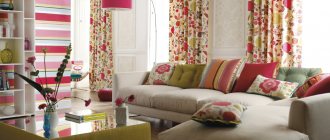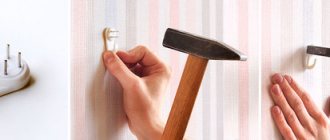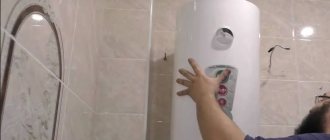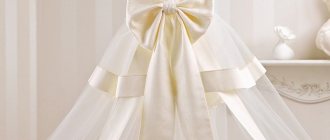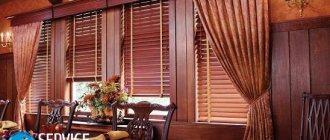Hi all! Creating a beautiful and practical interior in a frame house, in a country house or in an ordinary high-rise building often becomes the task of the immediate home owner. One of the pressing issues is how to hang a shelf on the wall.
This procedure may seem extremely simple and mundane. But not everyone knows how to act so that the fasteners are not visible, or what to do correctly if the walls are made of PVC, that is, of plastic panels, brick, shingles, lining and other common materials.
Today I will try to answer key questions, talk about the features of installing shelves and existing installation methods. You will get some answers from the video. And if you still have questions, you can always ask them in the comments.
Types of shelves
Basically, shelves are divided by design, methods of fastening and materials of manufacture. The most common types are the following:
- Classic shelves. Most often you can find this type of shelf in stores, because it is easy to install and reliable;
- Shelves with hidden fasteners. Unlike ordinary shelves, these are mounted on the wall using special fittings that are invisible;
- Floor structures. They are otherwise called shelving, and some believe that they are a type of cabinet. But racks differ from them in the absence of doors, and sometimes even a back wall. Such designs look light and do not clutter up the space, so they are especially relevant in the minimalist style and in small rooms. Also, the rack is inferior to the cabinet in terms of shelf depth.
The installation method is influenced not only by the type of structure, but also by the material of manufacture. In addition, the quality of the shelves, functionality and their appearance depend on it. Some styles require special furniture made from natural materials. For example, a plastic shelving would be inappropriate in Provence - only wood is used here. But for a loft or hi-tech it’s worth looking for metal shelves.
The shelves are made from:
- Tree. These can be either expensive species, or chipboard, MDF, etc.
- Metal. Usually the frame is made of it, but some shelf models can be completely metal.
- Glass. Glass shelves can often be found in a bathroom or shelving design. It can be matte or transparent.
- Plastic. The cheapest type of shelves, which is not durable or high quality. Plastic shelves are hung mainly in the children's room, in the kitchen or in the bathroom.
Product materials and tools used
It is important to initially prepare all materials and tools. Different mounting methods and materials from which the shelves are made will require different parts and tools. But it is possible to create a general overview of what is required. Materials for construction:
- plasterboard - such shelves look good and are attached to any surface;
- wood is a popular and durable material;
- Chipboard/laminated chipboard – high wear resistance and moisture resistance, tolerates temperature changes well;
- glass is a stylish design material that fits perfectly into many interior styles;
- plastic is lightweight, publicly available, inexpensive, the industry makes an endless number of variations of wall shelves from plastic;
- metal - shelves made of this material are rarely used, only when decorating a designer interior; to work with metal you may need a welding machine.
Almost all the tools used for installation can be found by any home craftsman. Namely:
- construction level;
- complete set of fasteners;
- hammer drill (for working with reinforced concrete), impact drill;
- screwdriver;
- jigsaw;
- plastic dowels;
- drill;
- hammer;
- marker or pencil;
- wrench for working with different types of anchors.
Depending on the complexity of the fastening, a cement solution is additionally used for strength.
What to consider when installing shelves
Before hanging a shelf, you need to pay attention to some installation nuances:
- Approximately determine how much load will be placed on the shelf.
- What will the shelf be used for?
- What type of fastening is required?
The most important thing here is the load. The type of fastener, installation method and location of the shelf depend on it. Large wall shelves require much more secure mounting than small plastic decorative shelves. Another feature is the purpose of the shelf. It should be located at a convenient height so that each family member can easily get the necessary thing. If you are equipping a home library, those books that are rarely read can be placed on high hanging shelves. But it is better to store your favorite literature in a rack.
Consider shelving as a way to zone a room. This technique is relevant in studio apartments, where you need to divide the space into several work areas. Shelving easily copes with this and can separate the kitchen from the living room, the bedroom from the nursery and any other areas.
In a children's room, the height of the shelves is responsible not only for convenience, but also for the safety of the child. They should be a little taller than his height, but not too low, because the baby is growing quickly. The most practical option is a small floor rack. Place your child's favorite toys on the bottom shelves so that he can easily reach them, and on the top - what he uses least often.
How to hang a shelf evenly using electrical tape and a level
The first thing you need to do is decide where the shelf will hang. Consider several important points at once: the shelf should not be located too high so that it is convenient to take things from it, and it should not interfere with you in the room.
Related article: Insulation of a brick wall with penoplex from the outside
Once you decide on the “where to hang?” question, move on to the “how to hang?” part. If you have a brick wall, then for measurements you can use electrical tape, which can be easily glued to the wall and then removed. To accurately mark the points where you need to screw in the screws, we recommend that you first measure the distance between the hinges on the shelf, and then cut a piece of electrical tape of the same size. Next, determine the point where the screw for one of the hinges will be located, apply a level (now the shelf will definitely hang straight!) and stick electrical tape over it.
Now all that remains is to drill holes close to the electrical tape with a drill, hammer in the dowels and screw in the screws. After peeling off the tape, you can safely hang the shelf!
Preparing to install shelves
Before drilling, you need to know exactly where the wires are laid so as not to accidentally cut off the power to the wall. This is not always easy to find out, so if you do not have a wiring diagram in your apartment, purchase a special hidden wiring detector. Make sure that the chosen mounting method is acceptable and that the load exerted by the shelf on the wall is moderate. After this, you need to mark the attachment points. This can be done in different ways: either pre-fix the hinges, or attach the shelf to the wall and mark the places for them. The first option is preferable, as it is more accurate and convenient.
Be sure to use a level when working - it will help track distortions and unevenness of the wall.
Attaching a shelf to a wall surface
The successful outcome of actions related to attaching a shelf to the wall surface is greatly influenced by the type of fastener. Therefore, before you begin this operation, you need to familiarize yourself with the types of fasteners.
- Invisible fasteners. When installing a shelf, the fastening elements are hidden in a brick or concrete wall. The result is a design that is refined and lightweight. It should be remembered that invisible fasteners cannot be used when attaching a shelf to plasterboard walls.
- Using brackets. If it is impossible to hide all the fastening parts, the best option would be to purchase corners made of plastic or steel; you can also use a set of decorative fasteners to make the structure attractive. It should be remembered that the brackets are not compatible with any interior.
- The most common fastening method, quick to implement, practical, simple and capable of matching any design, is hinges. The methods of their manufacture have different effects on the installed structure. And not everyone can fix them on their own. Therefore, to secure the product on the hinges, it is better to contact specialists.
- Use of glass holders. The rubber seals found in this fastener can reliably protect the surface of the area at the fastening site. Shelf holders of this type have different designs, one of which is a model with Velcro, secured at the bottom and a support at the top.
Tools for working with wall shelves
To hang the shelf, you will need the following tools:
- Drill. Its type depends on the material in which holes need to be drilled. If it is foam concrete, drywall and similar surfaces, a hand drill will do just fine. When working with a concrete wall, you cannot do without a hammer drill.
- Drills and bits. The wall may be stronger than expected, so having a set of extra drill bits on hand can be very helpful.
- Level. An indispensable tool designed to check the wall for distortions and unevenness.
- Screwdriver. Using a screwdriver will make the shelf installation process faster and easier.
- Pencil, ruler and other small items.
Step-by-step instructions on how to hang a shelf on the wall
In the section of the wall where the shelf will be attached, it is necessary to check the wall to ensure that electrical cables are hidden in it.
How to properly mount a shelf on the wall:
- To begin with, the master decides on the location of the fastener parts, when choosing which to take into account the features of the interior and the purpose of the shelf (for example, bookshelves have a larger width compared to the structure for plants). Having selected a shelf of the required length, the craftsman leans it against the wall at the site of intended installation. Using a level, you can check whether the shelf is horizontal in relation to the floor. After this, a line is drawn along the bottom of the shelf with a simple pencil.
- If you need to install a shelf in a tiled wall, you can try to make a hole between the tiles to avoid its destruction and check the horizontal position of the structure. If it is necessary to drill a hole in the surface of the tile, the fixing point is marked on technical tape glued to the tile in a cross pattern. Then the hammer drill bit will not slip. The depth of the hole being drilled should be slightly larger than the size of the dowel, which should be completely recessed into the wall. With this sequence of dowel installation, destruction of the tile slab will not occur.
- The weight of the stand must be evenly distributed over all fastening elements fixed in the wall using self-tapping screws, the distance between which should not be large, otherwise the product will hang in the center and there will be a need to create another fastening point in the middle (to increase rigidity). In general, it is necessary to install so many fastening elements so that the load acting on the structure (together with the load) is minimal. So, for shelves made of 15 mm fiberboard attached to the wall, the step between the fastening elements should be no more than 55 cm; for MDF models – no more than 65 cm.
- The fastener is leaned against the surface of the wall so that the positions of its top and the line drawn by the marker coincide. Next, the placement of one hole is outlined, the vertical installation of the fasteners is checked, after which the location of the remaining holes is outlined.
- When drilling holes, the master must use a drill, the cutting part of which is made of a material intended for processing this particular type of wall. Fastening elements with a small shoulder are fixed using self-tapping screws with dimensions of 50 (depth) by 5 (diameter) mm. Shelf holders with a long arm are fixed using self-tapping screws measuring 50 (depth) by 7 (diameter) mm.
Finally, let us remind you that even if you have the ability to install shelves using slats and fasteners, or process walls made of plaster or wood, you must take the work associated with attaching the shelf to the wall surface very seriously. In the absence of such skills, it is better to resort to the services of a specialist who, at low financial costs, can do this work efficiently.
Safety precautions when installing shelves
To avoid injury and damage, you must strictly follow safety precautions. Before starting installation, be sure to:
- Wear gloves, safety glasses and a mask.
- Check the power tool: there should be no mechanical damage. Before you start drilling into the walls, check if it works well.
- Make sure that there is no electrical wiring in the place where you plan to hang the shelf.
- The workplace must be comfortably equipped. Remove all objects that may interfere.
Nuances of fastening to a brick surface
Brick is a durable material, but when physical methods are applied to it, it becomes capricious and behaves unpredictably. Hanging a shelf on a brick wall is just as reliable as on a concrete one, but when working with this material, some nuances are taken into account. Namely:
- When choosing a fastening system, take into account the type of brick (hollow or not), strength and grade.
- If the wall is made of hollow brick, use a dowel-nail, an anchor and a chemical anchor, a specialized dowel that is tied into a knot in the brick voids.
- When working with bricks, do not use a hammer drill; chipping the material is unacceptable.
- Getting into the seam between bricks does not affect the progress of work and the reliability of the future structure.
The main point when working with brick is drilling. Chips in the material lead to its destruction, so only a drill is used to make holes. All manipulations are carried out extremely carefully, clearly controlling the entire process.
Features of hidden shelf fastenings
Installing a shelf using a hidden suspension has a number of features and differs from conventional installation:
- Consider the wall material. Shelves with hidden fastenings are not recommended to be hung on walls covered with plasterboard. If the surface is brick, its thickness should be more than 25 cm, and if it is concrete, it should be at least 10 cm.
- Shelf thickness. It should be in the range from 3 to 6 cm, the best option is 4-5 cm.
- Type of fastener. Choose pins whose length is equal to twice the width of the shelf. Also pay attention to the diameter - it should be more than 10 cm.
- Load. Each type of shelf has its own weight restrictions that need to be taken into account. This can be found out upon purchase.
A few more proven tips
Craftsmen involved in construction and finishing work have their own little secrets in any type of activity. In order to independently mount shelves on any surface, you should listen to additional tips:
- If the building is old, then after the hole is drilled, a little glue is poured into it and only then a dowel is inserted and a screw or anchor is screwed in.
- The dowel is chosen to be slightly larger in size than the hole. If this is not found, two are scored, one inside the other.
- Be sure to use spacer fastening.
- If the hinges attached to the shelf are wide enough, small dimensional errors are acceptable when drilling holes, but it is best to take preliminary accurate measurements.
Attaching shelves to the wall is not the most difficult task. It is important to take into account all the nuances, design features, the material from which the wall in the room is built, and choose the right fasteners.
How to hang a shelf if the wall is made of plasterboard
Material such as drywall is now in great demand. Installing shelves on walls sheathed with it differs from traditional methods, so special fastening systems designed for drywall can be found on sale. They greatly simplify the process and make the fastening reliable.
A shelf on a plasterboard wall can be hung in different ways:
- Special fastening systems. They are called molly or butterfly screws. Their use is allowed if a large load on the shelf is not expected.
- Power frame. Plasterboard sheets are installed on it.
- To Wall. Sometimes drywall may not adhere tightly to the wall. In this case, the shelf can be hung directly on the wall.
Mounting methods
Let's start with the fact that you can only get by without a drill or hammer drill as a tool for installing shelves when installing light decorative structures on soft walls, which can simply be penetrated with a self-tapping screw and a screwdriver.
But usually you need to use an auxiliary power tool. Especially when you need to install a heavy shelf that will be subject to a significant load on the wall:
- from plasterboard;
- made of concrete;
- brick;
- from aerated concrete;
- from foam blocks;
- wooden, etc.
The first thing you need to pay attention to is the material from which the walls are made. Here it will become clearer to you whether you can do without drilling the wall or not.
When planning how to mount shelves on a wall, the type or method of fixation plays a key role. To do this, you need to study the installation options to choose the most acceptable and suitable for you.
- No visible fastenings. This is a hidden fastener that allows you to make the fastenings invisible, and make the shelves themselves light and elegant. Suitable for brick, concrete, foam and aerated concrete walls. If this is a plasterboard partition less than 10 cm thick, it is better not to use installation with invisible fasteners;
- On brackets. It will not be possible to hide them, and therefore the brackets will remain visible. To save money, some are mounted on plastic or metal corners. But to create a beautiful interior, it is better to use appropriate brackets. Visible brackets do not suit all interior styles;
- Using holders. Relevant for shelves made of glass. There are rubber or silicone based gaskets that protect the glass from destruction. Shelf holders have different types and configurations, including suction cup options;
- On hinges and corners. The most common and easiest to implement method. Using hinges and corners of certain sizes, you can reduce or increase the load that the shelf can withstand. Fastening is carried out using guides or on metal stands;
- Through the bar. Relevant for hollow walls, where it is not possible to fix the shelf directly to the wall. First, a metal or wood strip is mounted, and the shelf itself is fixed to it. Suitable for those whose walls are made of thin plasterboard, hollow brick and other similar materials. Here it is important to fix the bar at the maximum number of points. Some fasteners will go into the void, but others will definitely catch. It will not be superfluous to know in advance about the location of the partitions.
The greatest number of questions are raised by fastening with invisible fasteners, as well as working with plasterboard walls. They are proposed to be considered separately.
The nuances of invisible fasteners
It makes no sense to talk in detail about this method of installing wall shelves if you carefully understand only 3 main issues.
- Thickness of the wall used. Installation with invisible fastening is possible in situations where it is a brick or concrete wall. Moreover, the concrete partition must have a minimum thickness of 105 mm, and the brick partition - 250 mm. If the parameters are smaller, you will have to use additional elements. Cinder block and plasterboard walls with a thickness of less than 100 mm are suitable only for hanging decorative shelves on which there is no load or it is minimal;
- The thickness of the shelf itself. It is not recommended to use shelves that are too thin or too massive. The material should not sag, must be dry and have a high-quality finish. If the load on the shelf is minimal, the thickness is selected from 30 mm. If the shelf is for books and other heavier objects, the thickness is taken in the range of 45-60 mm;
- Fastening. Fasteners are selected based on point 2 and the purpose of the shelf itself. Invisible fastenings are made in the form of a hinged loop and a rod. The loop is mounted on the back of the shelf and markings are made. A hole is made in the wall and a plug is inserted inside. Next, all you have to do is screw in a screw or self-tapping screw to the desired depth and attach the hinges to them.
Be sure to consider the expected load to avoid unnecessary problems. The higher the load, the more hidden fasteners need to be used. Remember to have a sense of proportion.
Working with plasterboard walls
Installing a shelf, and even one heavy enough to accommodate heavy objects in the presence of plasterboard walls, is not so easy. But you can also find a way out of this situation.
Experts offer several options for installing shelves on such walls.
- Using embedded beams. Considered the best option. Mounted directly to plasterboard sheets when mounting to the wall. The bars are fixed in the area where the shelves will be placed;
- Wall mounting. The option is not the most difficult. Here you will need to purchase Molly fasteners, umbrellas or butterfly dowels. They fit easily into the wall, do not scroll and allow you to hold a shelf with additional weight on them;
- Through profiles. Through holes are made in the area where the metal profile passes. Self-tapping screws are chosen approximately 5-6 mm longer than the sheet of drywall. Next, the shelf is installed on the wall;
- Using anchor reinforcement. This option is suitable for those who need to install shelves that will withstand heavy loads. Here you will need to make a hole, insert a plug and thereby secure the reinforcement.
I can’t say that installing a shelf is something really difficult and impossible even with the hands of a beginner. But you still need to adhere to certain rules.
How are you doing with the installation of shelves? What difficulties and problems arose during the work? How did you solve these problems and what ways out of a difficult situation did you find? Write about it in the comments.
Thank you everyone for your attention! Subscribe, ask relevant questions, invite your friends to join us and expect a lot of new materials on our website!
Attaching a shelf to a concrete wall
Concrete walls are the strongest and most reliable. They can withstand almost any load, but installing shelves here is correspondingly more difficult. You can’t do without a hammer drill and drills designed for concrete surfaces.
If you don't have a hammer drill, you can try making holes using an impact drill. But this is not the best way - most likely, its power will not be enough.
Concrete wall in a residential building: advantages and disadvantages, repairs
In the construction of modern houses, one of the most popular materials is concrete mortar. If previously it was used only for pouring foundations, now it is used to make almost all load-bearing structures of a building.
Ease of use, wide availability and low cost of this material have led to the fact that most modern multi-storey buildings are built using monolithic frame construction technology, so a concrete wall, as well as the floor and ceiling, is present in almost every residential apartment.
Original concrete wall decoration in a modern interior.
However, when moving into a new house, not all residents understand where to start renovating an apartment or, for example, how to hang a carpet on a concrete wall.
How to hang heavy shelves
When choosing a shelf, you must know exactly what load is expected. The size of the load-bearing surface, as well as the method of fastening, depend on the weight of the items stored on the shelf. If you plan to place large items on it, for example, pillows, blankets and bed linen, choose long shelves about 100-120 cm.
When storing heavy items, the maximum shelf length is 85 cm. Vertical support may also be required to prevent sagging. Place heavy objects so that their weight rests on supports. For a home library, it is better to give preference to shelves about half a meter long. This is not only convenient, because you don’t have to reach high, but also reliable - the shelves in the rack have more support points, and therefore are more practical than wall-mounted ones.
When installing shelves for heavy objects, you need to take into account the thickness of the wall, the permissible weight and the number of places for fasteners. The shelf can simply be hung on the wall without additional power frames, but it is still worth using them. There is especially no need to neglect additional methods of fastening in the case when the shelves are hung above a sofa or bed - there is a possibility that they will not withstand the load.
The structure of the wall also affects the fastening elements. For example, a shelf can be attached to a foam block using special dowels, dowel nails or an anchor.
Features of houses made of monolithic concrete
In order to comprehensively study the pros and cons of living in a residential apartment of a monolithic frame house, this article will consider some aspects of arranging life in a room with concrete walls.
The reader will also be presented with brief instructions that describe how to prepare a room for wallpapering. In addition, here you can see recommendations on what to drill a hole with before hanging a shelf on a concrete wall, as well as some other useful tips.
Construction of a residential building using monolithic frame technology.
Types of concrete wall panels
Having settled in a new house, before carrying out repairs or starting work on the decorative design of the home, you should understand that not all wall panels of a residential apartment must necessarily be made of monolithic reinforced concrete.
In modern construction, there are several technologies for using concrete mortar in the construction of residential buildings and structures.
- External and internal load-bearing walls, as well as interfloor ceilings, are most often made using monolithic frame construction technology from high-strength reinforced heavy concrete of the appropriate grade and strength class.
- Internal walls and interior partitions, provided that they are not load-bearing structures, are usually constructed from various types of lightweight concrete.
- For the manufacture of technological partitions and thermal insulation elements, building blocks made of ultra-light gas-filled cellular concrete can be used.
The photo shows an interior partition made of lightweight concrete.
Note! In addition to monolithic frame construction, there is also a technology for constructing external walls and load-bearing structures of buildings from prefabricated blocks or panels, which are also made from heavy grades of structural concrete.
Advantages and disadvantages
Like any building material, each type of concrete wall panels has its positive and negative sides.
- Monolithic panels are distinguished by very high strength, durability and load-bearing capacity, they are well resistant to moisture, high and low temperatures, as well as other atmospheric factors, therefore they are used for the construction of external and load-bearing walls of buildings . However, due to their high density, these materials have low thermal insulation ability and therefore require additional thermal insulation.
- Interior partitions and internal walls are designed for low loads , but even with a small thickness they have high heat and sound insulation properties, and are well suited to drilling and other types of mechanical processing without the use of special tools.
- Structural elements made of gas-filled cellular concrete are not designed to withstand load-bearing loads , but at the same time, very low thermal conductivity and low price make it an indispensable material for arranging thermal insulation of building structures. This material is very easy to machine, but before applying the topcoat it requires continuous puttying to seal open pores.
Common mistakes when installing shelves
Inexperienced people may hang the shelf incorrectly, and errors will appear after installation is completed. To avoid this, remember that:
- The length of the drilled hole should be slightly longer than the length of the screw.
- Foam concrete is a rather low-density material, so ordinary hardware cannot be used for fastening. They will not stick to the wall, moreover, they can destroy it. Plastic dowels, metal fasteners and chemical anchors should be used.
- If the load vector is directed perpendicular to the axis of the drywall sheet, the wall will simply break. To avoid this, special dowels for drywall are used: Driva dowel, butterfly dowel and Molly anchor.
- Heavy structures are attached exclusively to load-bearing walls.
- You need to carefully select fasteners that will match the type of shelf and be suitable for the wall material.
Bathroom shelf on tiles
Often, not only bathrooms, but also the kitchen are finished with tiles. In both places, shelves are not just part of the interior, but a necessity. The difficulty of hanging lies in the difficulty of drilling the tile itself; the work is done so as not to spoil the appearance of the cladding.
It is important to purchase a high-quality tool - a drill operating at different speeds, starting at low speeds and gradually increasing them.
Stages of work carried out:
- Determine where pipes, air ducts, and wiring run in the room.
- Mark the extreme and then intermediate fastening points, draw a horizontal line using a building level.
- The easiest way to drill is in the tile joints. If the tiles were initially laid correctly, you don’t need to use a level. If it is impossible to hang a shelf by making fasteners between the tiles, carefully drill the tiles. The hole is made in the middle (± 1–2 cm) of the tile. Drilling around the edges will cause cracks.
- To prevent the drill from slipping, seal the hole marked with a marker with regular tape in a crosswise manner.
- Drill at low speeds, stopping often so that the drill does not overheat.
- Having drilled through the tile, replace the drill with a hammer drill and continue working, but this time drilling a hole directly in the wall. The drill on the hammer drill is chosen to be slightly smaller than the drill bit on the drill (so as not to touch the tiles).
- A dowel is inserted into the hole, the screws are tightened, and the shelf is hung.
Useful tips
Even if you think that you don’t know how to hang a shelf correctly, you shouldn’t immediately call a professional. All you need to do is show a little effort and diligence, and you can easily get the job done. If, for example, you also need a shelving unit hung in the closet, then you can first practice on it, and then move on to working in rooms where there is finishing.
In addition, the greater the planned load on the fixed rack, the stronger the fasteners should be used. After all, over time, they may weaken, and the shelf will fall with all its contents. And this is extremely undesirable. Therefore, it is not recommended to skimp on bolts, as this can have negative consequences.
Shelves in a modern interior
In any house, if a person lives in it, there are always a lot of different jars, bottles, maybe books, souvenirs, photo frames and much more. And in order to keep order in the house, it is recommended to put each thing in its designated place. And often a wall shelf acts as such a place. It usually serves two functions - it is a convenient stand for something decorative or useful, and it can also be the highlight of a certain design.
Wall shelves in the interior
Depending on the room in which the shelf is installed, it can perform a very different role. So, in the kitchen there may be a set of spices on it or some elements of utensils. In the bathroom , a shelf is a must-have for arranging various bottles and bottles. A shelf is also needed in the bedroom , where you can place on it various things you need before going to bed. Of course, these interior elements are also in the living room - books, flowers, and souvenirs can be placed on them. Often they are able to significantly save space, as well as overcome clutter in the room, because from now on everything will be in its place. That is why this piece of furniture is absolutely irreplaceable, despite the fact that there may be many wardrobes or chests of drawers in the house.
On a note! The shelf is appropriate and functional in absolutely any interior, regardless of its style. The main thing is to choose the right and suitable option and place it in a place where the shelf will look organic and as part of the interior.
Moreover, it is important to choose not only a shelf that suits the style, but also one that you will like and look aesthetically pleasing when hung. When creating certain styles, it is important that the fastenings on it are invisible. In general, there are several variations of fixing shelves on the wall.


